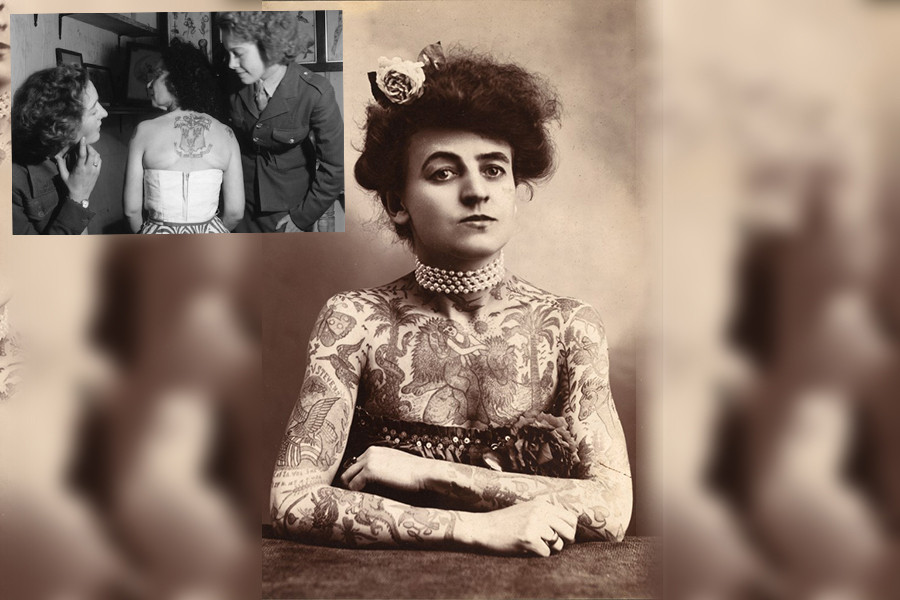Recognized as the first female tattoo artist: Who is Maud Wagner?
We wrote about the life of Maud Wagner, who was an acrobat in circus and learned the art of tattooing, which everyone sees as a male profession, and made her mark in history as the "first female tattoo artist" when she met a tattoo artist.

Her full name is Maud Stevens Wagner, she was born on February 12, 1877, in Emporia, Kansas. She was born to her father, David Van Bran Stevens, and her mother, Sarah Jane McGee. An aviator and acrobat who worked in several traveling circuses, Maud continued to travel in circuses and side shows.
In 1904, she met tattoo artist Gus Wagner, who described himself as "America's most artistically distinctive man," at the Louisiana Buying Fair (World's Fair). Tattoo, which is also in Anatolian and Mesopotamian cultures, appeared with the shapes that women had made on certain parts of the face, and its history stretched back to 2000 BC. Maud gravitated towards a romantic relationship with Gus, and the couple married a few years later. The couple has a daughter, Lotteva, who started tattooing at the age of nine and is also a tattoo artist.
As her husband's apprentice, Maud learned to make traditional "hockey-pokey" tattoos. At that time, although a tattoo machine was invented by Samuel O'Reilly, she wanted to continue with this method and became a tattoo artist herself. Maud and her husband began traveling together as two of the last tattoo artists to work by hand without the aid of modern tattoo machines. Also, Maud is considered the first known female tattoo artist of the United States.
Surprisingly, women from wealthy families wanted to enter a tattoo artist's drawing room for fun, and Maud succeeded in being a dramatic pioneer who swept her ink over the skin of women of the upper class as status. In addition to this, Gus covered Maud's body with all kinds of tattoos. Thus, she became an extra glamor and attention-getter for the most tattooed women's show in the world. Maud's own tattoos on her body were typical of the period: monkeys, butterflies, horses, snakes, trees, women, and her name on her left arm.
By the early 1900s, the tattoo craze was nearing its end with the aristocracy, and tattoos were now seen as the work of sailors and criminals. Compared to 1897, the proportion of people who got a tattoo in 1936 decreased by almost 70%. Despite this, Maud and Gus still had plenty of jobs, and that was because there weren't many tattooists people could go to.
After leaving the circus, Maud and her husband Gus traveled around the United States to become tattoo artists. In addition, they have worked together as "tattoo attractions" at vaudeville houses, county fairs, and entertainment venues. They are known for bringing the art of tattooing inland, far from the coastal cities and towns where the practice began.
Maud stopped getting tattoos after her husband's death. On January 30, 1961, Maud Wagner died of cancer at her daughter's home in Lawton, Oklahoma, and was interred at Homestead Cemetery in Homestead Township, Kansas.
